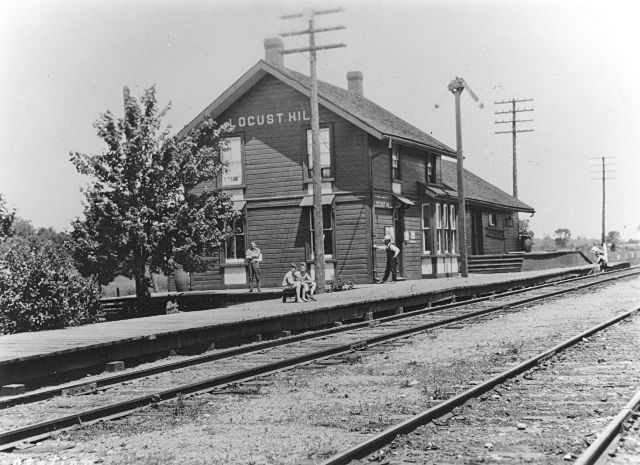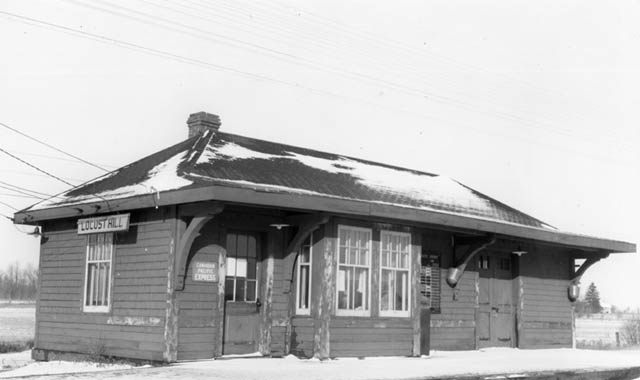Summary
The first station at Locust Hill was built by the Ontario & Quebec Railway in 1884 while its construction was progressing west towards Toronto. The Ontario & Quebec existed solely on paper as a proxy of the Canadian Pacific Railway, to whom it was leased for 999 years. The station followed a standard “Van Horne” design, named after William Cornelius Van Horne who was the general manager of Canadian Pacific at the time. Stations with these designs were built extensively by Canadian Pacific during its early years, particularly in rural areas where it was more economical to consolidate facilities as much as possible. The station agent’s living quarters were contained in the second floor, while below it was the waiting room and station agent’s office. A long baggage room extended outward from the north side of the building. The first train arrived in August 1884, and by 1899 a total of four passenger trains stopped in Locust Hill on a daily basis.
As rail traffic reached critical mass by the late 1800’s, Canadian Pacific began searching for solutions to allow for a higher volume of trains. An 1898 proposal involved double-tracking the entirety of the line from Montreal to Windsor, which was only partially fulfilled. Between Toronto and Smiths Falls, Canadian Pacific established a new right-of-way further south to serve communities closer to the lake in 1914. Initially this had little impact on the original mainline through Locust Hill, and ten trains still stopped there per day by 1921. The popularization of automobiles in the early to mid 20th century resulted in a significant decline in passenger ridership. This was further intensified when Highway 7 was established through the area between 1927 and 1932 by adapting several existing roads, including the one Locust Hill Station was situated on. The highway ran parallel to the railway and served many of the same communities, especially east of Havelock. The economic effects of the Great Depression would also contribute to the decline in ridership.
The original station was destroyed by fire in 1935 and a much smaller replacement was constructed the following year. It was a rectangular wood frame structure with a roof extension acting as a canopy above the platform. Service would be reduced even further in subsequent years to just six departures per day by 1953. A year later, Canadian Pacific introduced a new service using self-propelled Budd Rail Diesel Cars between Toronto and Peterborough, the success of which resulted in its extension to Havelock in 1957. Marketed as Dayliners by Canadian Pacific, they were significantly more economical to operate than the conventional trains they would ultimately replace. Service to Locust Hill increase to ten trains per day by 1966, most of which were Dayliners. However, all trains would now only stop there when flagged down to prevent unnecessary stops, likely as a result of low ridership at this station in particular. Canadian Pacific’s remaining passenger service was taken over by VIA Rail in 1978, who would serve Locust Hill for only a short time. It was closed after the last train departed on September 6th, 1982, but in March 1983 it was moved to the Markham Museum where it was restored and turned into a display piece.
The Havelock Dayliner resumed service in 1986, but no replacement station was ever built at Locust Hill. Service ceased for good following budget cuts to VIA Rail in 1990, and the line is now used solely for freight traffic.
Condensed Station Info:
| Location: | Served By: | Current State: | Date Built: | Date Demolished/Burned: |
| Highway 7 | Canadian Pacific Railway (1884 – 1978) VIA Rail (1978 | Burned down (First) Moved and Restored (Second) | 1884 (First) 1936 (Second) | 1935 (First) N/A (Second) |



